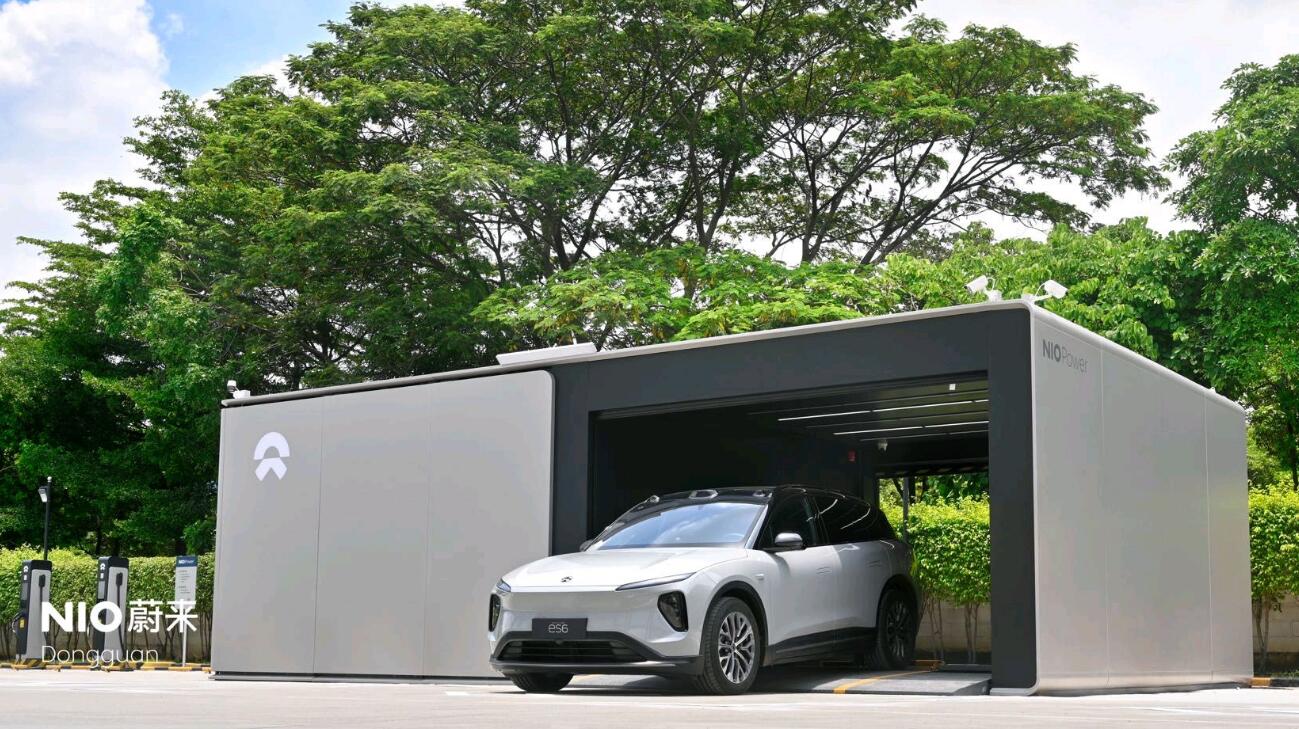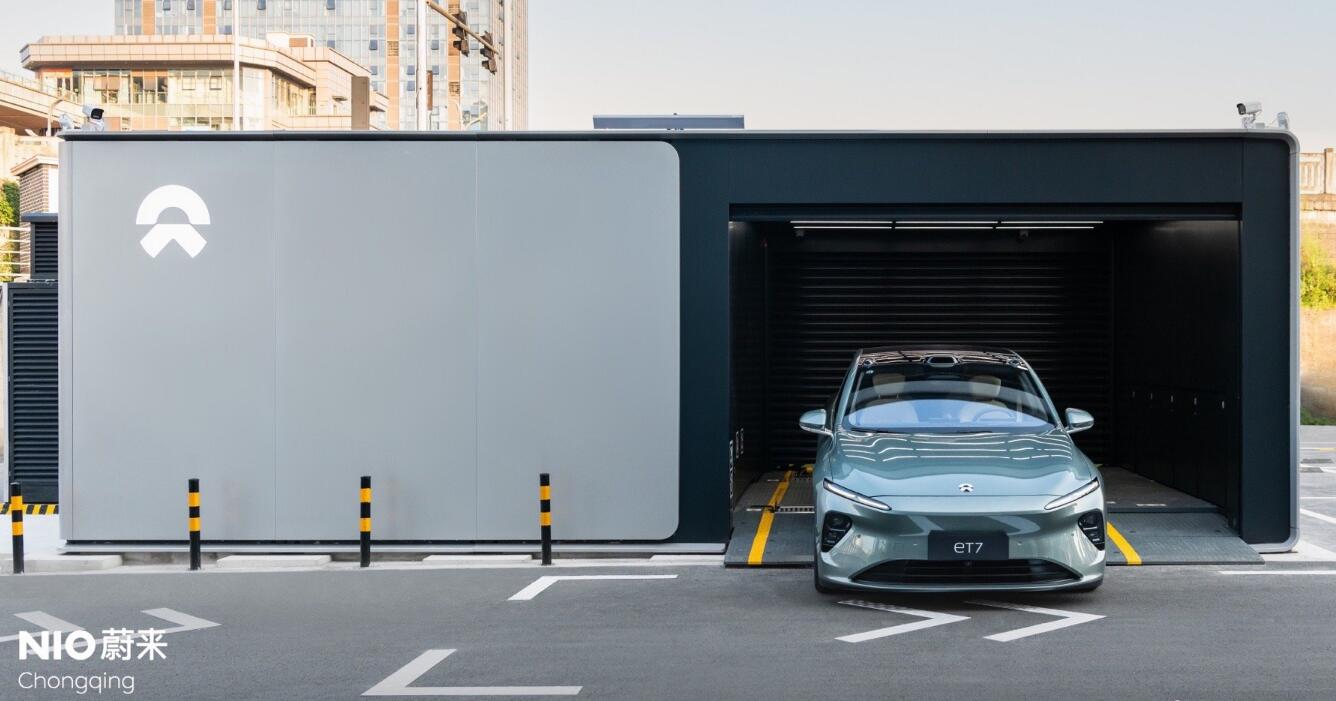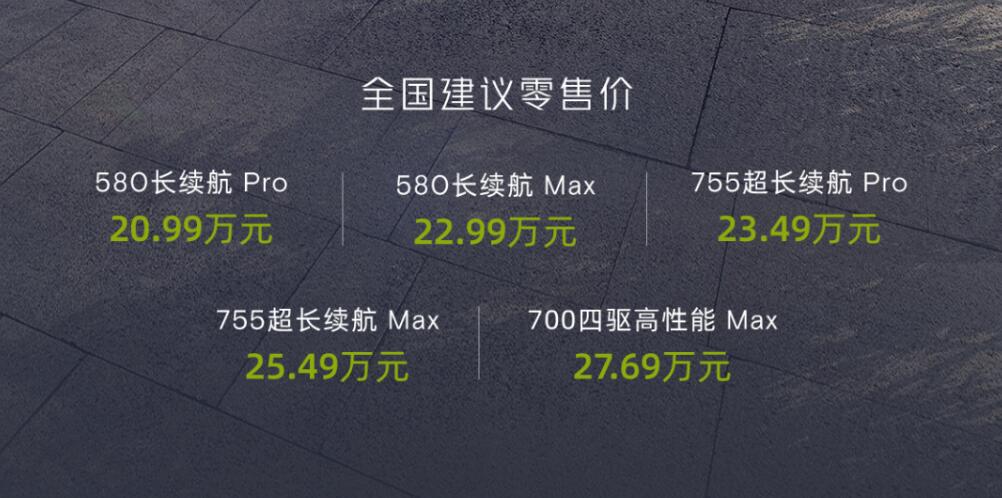In June, Nio added 95 battery swap stations in China.

(Image credit: Nio)
Nio (NYSE: NIO) today saw the largest single-day increase in the number of battery swap stations, as the electric vehicle (EV) maker moves toward its goal of adding 1,000 stations this year.
Nio put 29 new battery swap stations into operation in China today, bringing the total to 1,543, with 423 of those stations located along highways.
This is the highest single-day addition of battery swap stations for Nio, surpassing the previous record of 22 on October 31, 2021, according to data monitored by CnEVPost.

In June, Nio added 95 battery swap stations, largely meeting the company's previously mentioned goal.
Nio announced plans late last year to add 400 battery swap stations in 2023, but that plan was raised to 1,000 on February 21.
William Li, Nio's founder, chairman and CEO, said at the time that the company would further accelerate the deployment of battery swap stations, with a goal of having more than 2,300 battery swap stations in China by the end of 2023.
The company will deploy about 100 battery swap stations in June and more quickly thereafter, which will help boost sales, Li said during a June 9 first-quarter earnings call.
In overseas markets, Nio put a new battery swap station into operation in Germany on June 29, its third in the country.
As of June 29, Nio had 18 battery swap stations and eight charging stations in Europe.

Nio also put 18 supercharging stations into operation in China today, bringing the total to 1,482 and providing 7,271 supercharging piles. It added four new destination charging stations today, bringing the total to 1,285 stations with 9,096 charging piles.
The company made a decision earlier this month that will likely have far-reaching implications for its battery swap system.
On June 12, Nio lowered the starting prices of its entire lineup of vehicles by RMB 30,000 ($4,140) and made the previously free battery swap service offered four or six times per month a paid option with an upgrade package that costs RMB 30,000.
The move is expected to increase the appeal of Nio vehicles in areas where battery swap stations are few, as potential customers will not have to worry about paying the extra price but not enjoying the convenience of battery swap service.
Nio's local counterpart Li Auto (NASDAQ: LI), whose current models are all extended-range electric vehicles (EREVs) that can be refueled, has also begun building out its charging network.
Li Auto today put five supercharging stations into operation, bringing the total number to 30. The company opened the first seven superchargers for trial operation on April 20.
($1 = RMB 7.2491)


The post Nio puts 29 swap stations into operation, most ever in single day appeared first on CnEVPost.
For more articles, please visit CnEVPost.










 The Zeekr 001 and Zeekr X were developed at Zeekr's global design and development center in Gothenburg, Sweden, the company said in April.
The Zeekr 001 and Zeekr X were developed at Zeekr's global design and development center in Gothenburg, Sweden, the company said in April.















